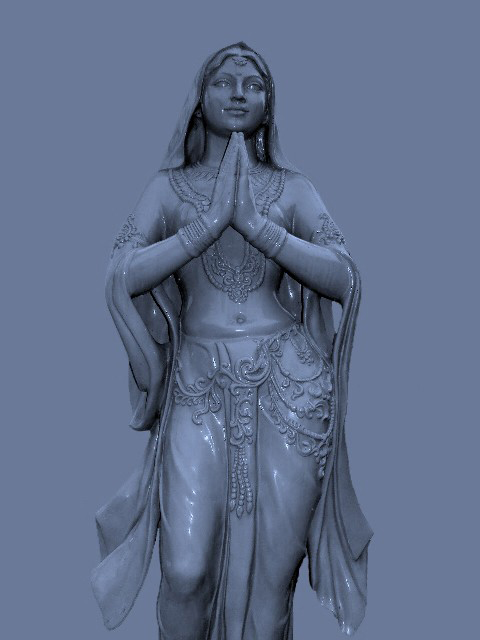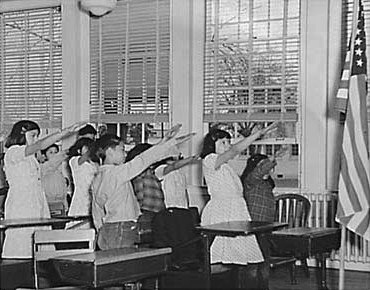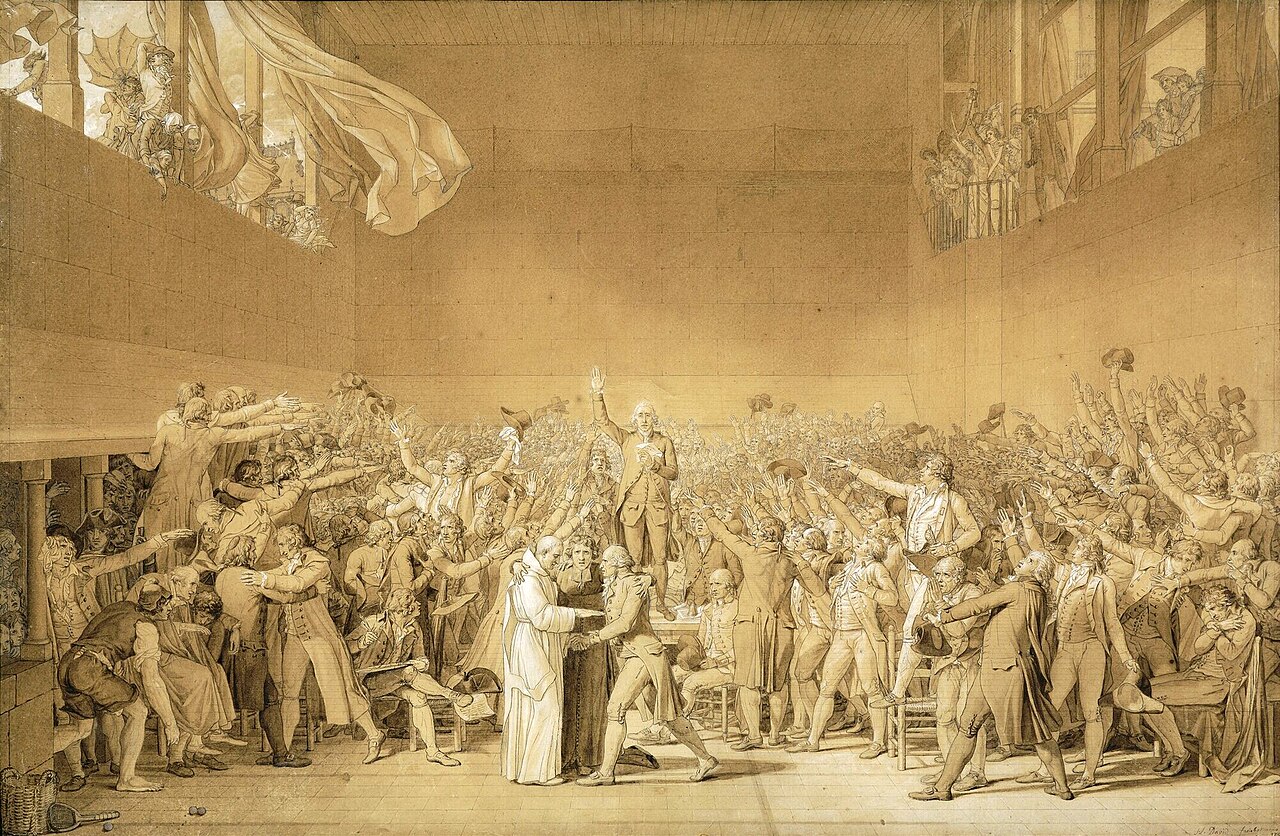Anthony Fauci has stated that the handshake is an epidemiologist’s worst nightmare.
Fauci wishes that the custom of the handshake would disappear.
What could replace the handshake as a custom of greeting?
In the time of the novel coronavirus, the elbow bump has at times served as a surrogate for the handshake.
But the elbow bump seems like it is done largely for fun, as a kind of parody that just happens to be a useful replacement for the handshake.
Indeed, the elbow bump originated as a parody of the fist bump, which is itself one step away from the handshake.
People generally do not like to diverge too far from custom.
The elbow bump is thus unlikely to become established as a replacement for the handshake.
Here, the assumption is being made that innovation in social norms tends to happen in unique historical conditions:
- during a profound, prolonged crisis (say, a pandemic);
- along the lines of established customs (say, borrowing from the pledge of allegiance);
- in a period of changing technology (say, online meetings).
The time may be ripe for diversifying away from the handshake without totally abandoning it.
Again, what would take its place?
Interestingly, the handshake was itself originally not an established custom in American history.
For example, George Washington preferred bowing.
It was the Quakers who popularized handshaking because of its egalitarian and communal flavor.
So there might be hope for further innovation in American greetings.
This might be especially true because online conferencing is now a permanent facet of life.
You cannot shake hands over the internet.
What greeting gesture would be telegenic and prevent the spread of disease?
The South Asian namaste greeting might be especially appealing.
This is done by placing the two palms of the hands together and placing it near your heart and bowing the head slightly.
With namaste,
- the mouth remains closed and
- distance is maintained.
The latter precaution is lacking with the elbow bump.

https://en.wikipedia.org/wiki/Namaste
Namaste is a dignified gesture, and diplomats who must remain maskless and silent during photo shoots have recently adopted it.
Indeed, namaste may become a permanent part of the diplomat’s etiquette.
It may appeal to some ordinary people.
It is more egalitarian and less formal than a stiff bow.
It also resembles the Christian act of prayer.
But, again, Americans are unlikely to adopt a self-consciously foreign custom.
Namaste might be just too gosh darn exotic for Americans.

One might look back into American history to find an alternative to the handshake.
One prospect might be the Bellamy salute.
The Bellamy salute was introduced along with the Pledge of Allegiance into American schools after 1892.
Raising one’s right arm is an American custom in oath taking.
For example, it is what witnesses do when they are sworn in during a trial.
https://en.wikipedia.org/wiki/Bellamy_salute



One obvious problem with the Bellamy salute is that it resembled the fascist salute.
Thus, the Bellamy salute was retired in 1942 and replaced with the hand on the heart.

https://www.bbc.com/news/world-us-canada-37208404
As relatively recent as it is, the hand on the heart might just make a pretty good American greeting.
American school kids put their hands on their hearts once a day in school for the flag ceremony.
By the time they have graduated high school, they have performed that gesture over two thousand times.
That is many more times than they have shaken hands.
That is an ingrained and established custom.
It also might make a good greeting gesture for online meetings.

One emerging custom is to wave to everyone as a video-conference comes to an end.
It is a decisive way to end a Zoom meeting, much more than a verbal goodbye.
https://www.cnn.com/2020/06/23/tech/waving-video-calls/index.html

There would therefore be the two new customs that would replace the handshake and provide etiquette for video-conferencing:
- the right hand on the heart would be the new greeting, and
- a light wave would be the new goodbye.
Interestingly, the customs of placing one’s hand on one’s heart and raising that hand are connected in Western history.
They are associated with the so-called “Roman salute”.
A myth developed that the Romans would salute by placing their hands on their hearts and then raising that hand to the sky.
On the one hand, some fascists prefer the stiff hand-over-heart salute — the first sequence in the supposed Roman salute.
https://en.wikipedia.org/wiki/Zogist_salute


On the other hand, other fascists lean more toward the arm-in-the-air salute — the second motion in the reconstructed “Roman salute”.

Unfortunately, there is little historical evidence of how the Roman’s saluted one another.
https://en.wikipedia.org/wiki/Roman_salute
The modern gesture consists of stiffly extending the right arm frontally and raising it roughly 135 degrees from the body’s vertical axis, with the palm of the hand facing down and the fingers stretched out and touching each other.[1] According to common perceptions, this salute was based on an ancient Roman custom.[1] However, this description is unknown in Roman literature and is never mentioned by ancient historians of Rome.[1] Not a single Roman work of art displays a salute of this kind.[1] The gesture of the raised right arm or hand in Roman and other ancient cultures that does exist in surviving literature and art generally had a significantly different function and is never identical with the modern straight-arm salute.
The Romans were known to raise their hands not for salutes, but for greetings, pledges and oaths — similar to Americans.
Men in authority would also raise their right arm when their speaking to a crowd, which some politicians still do.
The raised arm in oath taking became a convention in French painting since the time of the French Revolution.
(“The Oath of the Horatii”, J-L David)

(“The Tennis Court Oath”, J-L David)

In the early 20th-century Western cinema, the raised arm as a salute became a staple in the portrayal of Roman and antique Mediterranean custom.
(“Cabiria”, 1914)

(“Ben Hur”, 1959, imperial triumph scene)
https://youtu.be/4zGxi-7xDDw?t=68
https://www.businessinsider.com/origins-of-us-military-salute-2017-12
If you’ve ever seen any of the Roman movies, the Romans would sometimes slap their chest and put their arm up in the air as a matter of salute. And they say that that salute had an origin to show allegiance from your heart and then to show that you didn’t have a weapon in your fighting hand — that your hand was open and that you’re a friend. That’s one of the very early origin stories.
This was later adopted by Italian Fascists and German Nazis and their kindred spirits (e.g., the current ruling party of India).
So the so-called “Roman salute” was created and propagated by Hollywood and later adopted by Italian fascists who assumed it was a historical artifact.
This is an example of the “pizza effect”.
https://en.wikipedia.org/wiki/Pizza_effect
In religious studies and sociology, the pizza effect is the phenomenon of elements of a nation or people’s culture being transformed or at least more fully embraced elsewhere, then re-imported to their culture of origin,[1] or the way in which a community’s self-understanding is influenced by (or imposed by, or imported from) foreign sources.[2]
Related phrases include “hermeneutical feedback loop”, “re-enculturation”, and “self-orientalization”. The term “pizza effect” was coined by the Austrian-born Hindu monk and professor of Anthropology at Syracuse University, Agehananda Bharati[2][3] in 1970,[4] based on his understanding of the history of pizza.[4]:273
Bharati writes of how pizza was in Italy originally simple flat bread.
It became a full meal in the USA, topped by cheese, meat, sauce and vegetables.
Italians later adopted this American “pizza” and imagined it to be Italian in origin.
The original pizza was a simple, hot-baked bread without any trimmings, the staple of the Calabrian and Sicilian contadini from whom well over 90% of all Italo-Americans descend. After World War I, a highly elaborated dish, the U.S. pizza of many sizes, flavors, and hues, made its way back to Italy with visiting kinsfolk from America. The term and the object have acquired a new meaning and a new status, as well as many new tastes in the land of its origin, not only in the south, but throughout the length and width of Italy.
Bharati’s original examples of the pizza effect were from India.
However, these examples did not involve the adoption by Indians of foreign innovations wrongly assumed to be authentically Indian.
Rather, they involved the elevation in status in India of Indian cultural products that were celebrated in the West.
- The Apu trilogy films of Satyajit Ray, which were flops in India before they were given prizes in Western countries and re-evaluated as classics of the Indian cinema[5]
- The popularity in India of movements like those of Maharishi Mahesh Yogi and ISKCON based on their popularity in the West[5]
- The popularity of postural yoga in India, several gurus, and some other Indian systems and teachings following their popularity in the West[6]
- The exalted status of the Bhagavad Gita in Hinduism, where, although it was always highly regarded, it gained its current prominence only following Western attempts to identify a single canonical “Hindu Bible”[4]
However, modern yoga is an example of the classic pizza effect involving two-way cultural appropriation.
Yoga as it is known in the West originated in relation to meditation.
It originated as a way to remain comfortable while in a sitting position for long periods of time.
It seems to have been rather limited in scope.
By the end of the 19th century, Hatha yoga was almost extinct in India, practiced by people on the edge of society.
It was despised by Hindus and the British Raj alike.
The marginalization of yoga changed when Yogendra (starting in 1918) and Kuvalayananda (starting in 1924) taught yoga ostensibly as a means of attaining physical wellbeing, and to study its medical effects.
Their real motivation, however, was a nationalistic desire to show the greatness of Indian culture.
Since then, yoga has became very elaborate, diverse and athletic.
Today, yoga is one of the favorite exercises of Western yuppies.
https://en.wikipedia.org/wiki/Postural_yoga_in_India
Postural yoga began in India as a variant of traditional yoga, which was a mainly meditational practice; it has spread across the world and returned to the Indian subcontinent in different forms. The ancient Yoga Sutras of Patanjali mention yoga postures, asanas, only briefly, as meditation seats. Medieval Haṭha yoga made use of a small number of asanas alongside other techniques such as pranayama, shatkarmas, and mudras, but it was despised and almost extinct by the start of the 20th century. At that time, the revival of postural yoga was at first driven by Indian nationalism. Advocates such as Yogendra and Kuvalayananda made yoga acceptable in the 1920s, treating it as a medical subject. From the 1930s, the “father of modern yoga” Krishnamacharya developed a vigorous postural yoga, influenced by gymnastics, with transitions (vinyasas) that allowed one pose to flow into the next.
However, so much of the familiar yoga repertoire did not originate from India.
They originated from Scandinavian gymnastics in the late 19th century.
Gymnastics became popular during the macho Victorian age of European colonization.
The invention of photography made dissemination of gymnastics possible on a global scale.
https://www.bbc.com/news/world-40354525
[M]any of the most well-known asanas and sequences they are used to performing – including “Downward Dog” and Surya Namaskar, or “Sun Salutation” – are not found in ancient texts.
Sun salutations are “now seen as integral to yoga practice” but are not found in any old texts and only started being taught around the 1930s, says Dr Jim Mallinson, a yoga history researcher and senior lecturer at the University of London’s School of Oriental and African Studies (SOAS).
Popular yoga styles like Ashtanga, Iyengar and Vinyasa Flow are also modern incarnations. “We find elements of them in older texts and historical sources but also many parts of them are modern innovations in terms of yoga,” he says.
Researchers believe Downward Dog actually corresponds with the Elephant Pose – references to which are first found in 18th Century texts. The posture was also traditionally used as an exercise by Indian wrestlers.
However similar postures can be found in popular physical exercise books that emerged at the beginning of the 20th Century.
Dr Mark Singleton, a senior researcher in the modern history of yoga at SOAS, says Swedish and Danish gymnastic drills were particularly influential on Indian yoga practices.
A widespread “preoccupation with natural fitness” at the turn of the 19th Century coincided with developments in photography, which allowed pictures of poses and exercises to easily spread between India and the West.
“This inevitably meant that European notions of gymnastics and bodybuilding got mixed up with Indian postures and poses along the way,” he writes. “And what many of us know today as yoga is partially a result of this mixing.”
Yoga in India was first practised only by religious ascetics, and clear references to it can be found in texts from 2,500 years ago, Dr Mallinson says. For them, yoga was “totally about steadiness and stillness”, not the dynamic kind of movements found in yoga classes today.
Over time practices evolved, but yoga has undergone a significant shift in the last 100 years as part of globalisation, and physical postures in particular have become more important.
Such holy men performing feats like sitting still for days still exist today in India, he says. But mass participation in yoga by Indians only came in the 20th Century, as in the rest of the world.
In fact, the exposure of Indians to Western gymnastics was very direct and obvious.
At this stage, this was not the pizza effect properly speaking.
It was, rather, the conscious appropriation of Western culture.
The pizza effect happened later when Indians forgot about the Western influence on yoga, especially after it became popular in the West.
Scandinavian gymnastic keep fit drills were introduced in schools and military training throughout India. European bodybuilders commanded huge audiences when they toured the subcontinent and their techniques were enthusiastically adopted. During the 1920s and ’30s, (a period of growing Indian nationalism) a new generation of Indian fitness enthusiasts began to re-invent yoga as a modern, homegrown system for health and strength which could be practised by ordinary people.
There is a connection between gymnastics and fascism, with their mutual focus on physical vitality and choreography.
https://en.wikipedia.org/wiki/Leni_Riefenstahl#Africa,_photography,_books_and_final_film
http://marcuse.faculty.history.ucsb.edu/classes/33d/33dTexts/SontagFascinFascism75.htm
The rendering of movement in grandiose and rigid patterns is another element in common, for such choreography rehearses the very unity of the polity. The masses are made to take form, be design. Hence mass athletic demonstrations, a choreographed display of bodies, are a valued activity in all totalitarian countries; and the art of the gymnast, so popular now in Eastern Europe, also evokes recurrent features of fascist aesthetics; the holding in or confining of force; military precision.
That puts the political role of yoga in contemporary India in a different light.